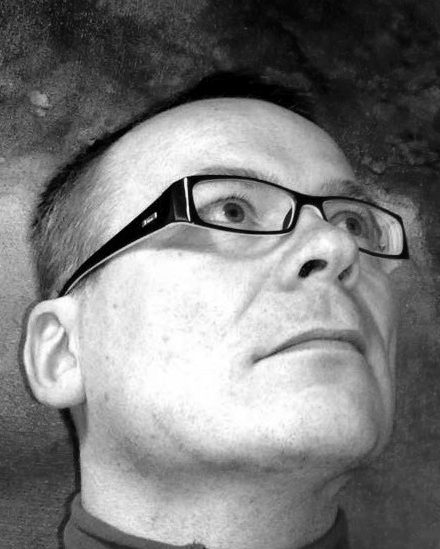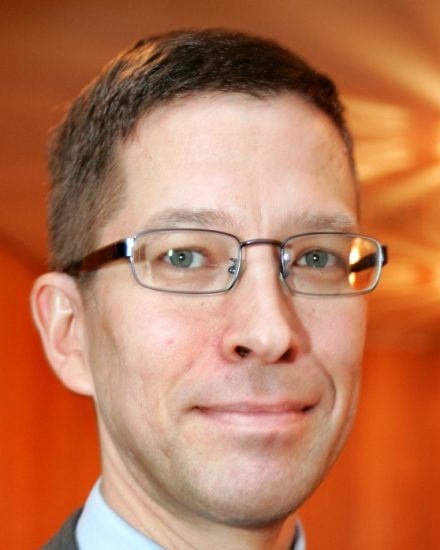Panel
Timely access to spectrum will unlock novel 5G businesses
Wednesday, June 12, 12:45-13:45
Key to the success of 5G services is the ability to timely access suitable harmonized mobile spectrum in required locations on appropriate terms based on the needs of the use case and the business model. In terms of global harmonization, 3GPP and ITU are moving forward with standards and spectrum for 5G with special focus on emerging novel use cases (IoT, digital automation, smart cities, augmented/virtual reality) with diverse requirements. No wireless 5G services can be provided credibly and scalable without internationally agreed technical specifications and access to sufficient amount of harmonized radio spectrum. Spectrum is an essential enabler for 5G, and significant changes in spectrum characteristics are expected with respect to previous generations, including the amount and bandwidth of spectrum, type of spectral bands, and also, the ways of authorizing the use of spectrum, including unlicensed and shared use. In particular, different spectrum sharing mechanisms would inevitably lead to a range of novel implementation solutions and business models, ranging from stand alone to hosting on a public mobile network or a dedicated wholesale network. Flexible 5G NR framework will natively support different spectrum types: licensed, shared and unlicensed, and new sharing paradigms through scalable OFDM-based interface, TDD self-contained and flexible slot-based structure, network MIMO and mobile mmWaves. For example, utilization of higher spectrum bands at mmWaves calls for small cells and local spectrum licensing as the radio range will be very small compared to current spectrum bands. Unbundling investments in spectrum, infrastructure and services will lower entry barrier for new service providers and leads to new incentives for local players for building and operating networks, as well as offering localized context depended services. This panel would give an overview of the current status in spectrum for 5G, and what kinds of novel deployment solutions and business models could be expected via different spectrum types and sharing schemes.
Panelists

Seppo Yrjölä is a Principal Engineer at Nokia Enterprise and an Adjunct Professor (Docent) at the Faculty of Information Technology and Electrical Engineering, University of Oulu. He holds a Dr. Sc. degree in Telecommunications Engineering from the University of Oulu. Seppo conducts multi-disciplinary techno-economic research combining technology, business and regulatory aspects for the development of future wireless communication networks and services. He has established, executed and transferred 18 research and innovation projects into business, contributed to 700 innovation ideas/projects, and found 3 new business areas. Dr. Yrjölä has authored more than 80 peer-reviewed publications, holds 10 patents, and has been awarded over €10 million in competitive research funding as the lead investigator.

Stefan Parkvall is a Senior Expert at Ericsson Research working with 5G and future radio access. He is one of the key persons in the development of HSPA, LTE and NR radio access and has been deeply involved in 3GPP standardization for many years. Dr Parkvall is a fellow of the IEEE and served as an IEEE Distinguished lecturer 2011-2012. He is co-author of the popular books “3G Evolution – HSPA and LTE for Mobile Broadband”, “HSPA evolution – the Fundamentals for Mobile Broadband”, “4G – LTE/LTE-Advanced for Mobile Broadband”, “4G, LTE Advanced Pro and the Road to 5G”, and “5G NR – The Next Generation Wireless Access”. Dr. Parkvall has more than 2000 patents in the area of mobile communication. In 2005, he received the Ericsson “Inventor of the Year” award, in 2009 the Swedish government’s Major Technical Award for contributions to the success of HSPA, and in 2014 he and Ericsson colleagues were among the finalists for the European Inventor Award for their contributions to LTE. Dr Parkvall holds a Ph.D. in electrical engineering from the Royal Institute of Technology (KTH) in Stockholm, Sweden. Previous positions include assistant professor in communication theory at KTH, and visiting researcher at University of California, San Diego, USA.

Heikki Kokkinen, Fairspectrum, received his Ph.D degree in com-puter science from Aalto University in 2011, anacademic entrepreneur degree from Aalto University,School of Business, Espoo, Finland in 2013, his li-centiate degree in telecommunications and industrialeconomics, and masters degree in electronics fromHelsinki University of Technology in 1997 and 1993,respectively. He is the founder and chief executiveofficer of Fairspectrum, Espoo, Finland. His researchinterests include the marketing, research and devel-opment, financing, system integration, piloting, anddeploying of wireless access networks

Karol Kowalik is a telecommunications engineer, holding a PhD from Dublin City University in Ireland. He is the Technology Development Manager at INEA S.A. where he participates in many technological projects covering wide spectrum of technologies such as GPON, DOCSIS, WiFi, WiMAX. His research interests include networking, switching, routing, network management, wireless and wired access. He has a number of publications in these areas.

Marcin Dryjanski is the co-founder of Grandmetric, heading the field of wireless systems. In this role, Marcin provides consulting services and training courses on LTE and 5G related topics, and leads company’s wireless research on Grandmetric’s IoT platform “Souly”. During the past 10+ years, he has served as R&D Engineer, Lead Researcher, R&D Consultant, Technical Trainer and Technical Leader. Marcin worked at Huawei’s R&D RAN systems department on 5G RAN architecture. Before that, he has been providing expert level courses on LTE/LTE-Advanced for leading mobile operators and vendors all around the world. Additionally, Marcin has been an active company’s representative and speaker at numerous conferences including MWC, IEEE VTC, IEEE ICC, SON Conference, IEEE EUCNC, EAI Crowncom, Wireless Innovation Forum and 5G-World. Marcin has held Senior IEEE Membership since 2018. Marcin co-authored several research papers targeting LTE-Advanced Pro and 5G radio interface design, and is a co-author of a book entitled “From LTE to LTE-Advanced Pro and 5G”, (M. Rahnema, M. Dryjanski, Artech House 2017). Marcin was a Work Package leader in EU-funded research project aiming at radio interface design for 5G called FP-7 5GNOW.

